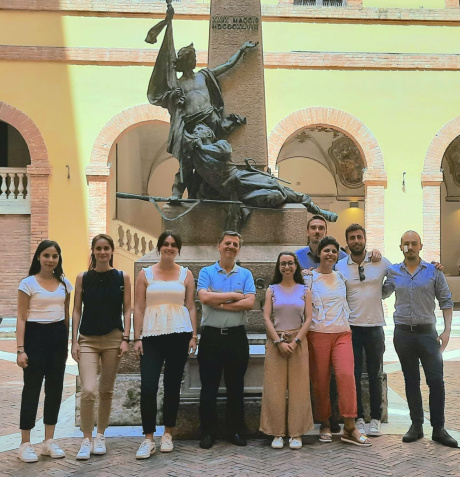Identification of new biomarkers for personalized diagnosis in type 1 diabetes mellitus
The University of Siena has discovered a set of novel biomarkers which could lead to improving the diagnosis and management of type 1 diabetes mellitus. An international team of researchers led by Professor Francesco Dotta, Professor of Endocrinology at the University of Siena and director of the Diabetology Unit of the University Hospital in Siena, has in fact published in the journal "Cell Reports Medicine" the result of a study funded by the European Union as part of the INNODIA project and by the Italian Ministry of University and Research as part of the National Center "Development of gene therapy and drugs with RNA."
Using advanced RNA sequencing technology, which requires a few microliters of blood, the researchers have identified a group of circulating microRNAs that could become valuable diagnostic and prognostic tools for disease diagnosis and monitoring.
Professor Guido Sebastiani, Associate Professor of Laboratory Medicine at University of Siena and first author of the study, said: "MicroRNAs are small RNA molecules that regulate many biological processes linked to the onset and progression of type 1 diabetes mellitus. In this work, we analyzed the microRNAs present in the blood of a large group of people with this disease, revealing a set of microRNAs derived from a specific region of chromosome 14, known as 14q32, which is also associated with the risk of developing type 1 diabetes mellitus."
These microRNAs made it possible to identify two subgroups of people with type 1 diabetes mellitus, defined as Cluster A and Cluster B. Subsequent analyses of another group of people with type 1 diabetes mellitus confirmed this distinction. In particular, people belonging to Cluster B, who have an increased expression of a specific group of microRNAs, show better blood glucose control and a different blood immunological profile.
"Our research – added Professor Francesco Dotta - has identified potential biomarkers that could change the way we understand and treat type 1 diabetes. This finding, coupled with evidence that type 1 diabetes mellitus is a heterogeneous disease, offers hope for more targeted and personalized therapies and thus for better treatment of the disease in the near future. I also emphasize that, more than a century after the discovery of insulin (to date the only possible therapy in patients with type 1 diabetes mellitus), therapeutic strategies are finally being developed aimed at protecting the beta cells of the pancreas, blocking those cells of the immune system responsible for the onset of the disease".
A first drug, a monoclonal antibody directed against T cells, has already been approved by the U.S. Food and Drug Administration. In this context, through a personalized medicine approach, specific circulating microRNAs may represent excellent candidates to identify those subgroups of patients to be treated with the most suitable therapeutic strategy. The discovery of the research group of the University of Siena suggests that circulating microRNAs can be measured by a simple peripheral blood sample, in order to identify two distinct subgroups of individuals with type 1 diabetes mellitus, each with specific immunological and clinical characteristics. This can lead to new personalized treatment strategies, improving both the diagnosis and management of the disease.
 Ateneo
Ateneo Didattica
Didattica Ricerca
Ricerca Internazionale
Internazionale